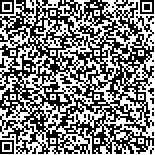| 本文已被:浏览 3946次 下载 4494次 |

码上扫一扫! |
|
|
| 海洋浮游微食物网生物在海洋颗粒形成和沉降中的作用 |
|
赵苑1,2, 赵丽1,2, 董逸1,2, 李海波1,2, 张武昌1,2, 肖天1,2
|
|
1.中国科学院海洋生态与环境科学重点实验室 中国科学院海洋研究所, 青岛 266071;2.青岛海洋科学与技术国家实验室 海洋生态与环境科学功能实验室, 青岛 266071
|
|
| 摘要: |
| 海洋中存在着大量的颗粒,包括大型聚合颗粒(即海雪,粒径>500μm)、小型聚合颗粒(1~500μm)和亚微米颗粒粒径(<1μm)等。颗粒在海水中营造了不同于纯海水的小生境,其中生活着与自然海水中不同的生物。异养细菌、蓝细菌、真核藻类、鞭毛虫、纤毛虫等微食物网生物可以黏附在海洋颗粒上,或生活在颗粒内部,其丰度高于周围水体中的自由生活生物,这可能是由于颗粒提供了更适宜生长的营养环境。本文综述了海洋浮游微食物网生物在海洋颗粒形成和沉降中的作用。微食物网生物在颗粒物的形成过程中起到很重要的作用,它们可以直接促进颗粒形成,也可以彼此结合成颗粒,或微型浮游动物排粪形成颗粒。微食物网生物还可以对颗粒进行转化,影响颗粒的大小、沉降速度、或对颗粒及其黏附生物进行摄食。微食物网生物由于本身较小,沉降较慢,但这些生物和颗粒的结合使得微食物网生物在碳通量中发挥重要的作用。 |
| 关键词: 微食物网 海洋颗粒 沉降 碳通量 |
| DOI:10.12036/hykxjk20170822002 |
| 分类号:Q178.1 |
| 基金项目:国家自然科学基金(41576164);国家自然科学基金-山东省联合基金(U1606404);国家重点基础研究发展计划资助项目(2014CB441504);中国科学院战略性先导科技专项(XDA11030202.2)。 |
|
| The Function of Marine Pelagic Microbial Food Web Organisms in Marine Particle Formation and Sedimentation |
|
ZHAO Yuan1,2, ZHAO Li1,2, DONG Yi1,2, LI Hai-Bo1,2, ZHANG Wu-Chang1,2, XIAO Tian1,2
|
|
1.CAS Key Laboratory of Marine Ecology and Environmental Sciences, Institute of Oceanology, Chinese Academy of Sciences, Qingdao 266071, China;2.Laboratory of Marine Ecology and Environmental Sciences, Qingdao National Laboratory for Marine Science and Technology, Qingdao 266071, China
|
| Abstract: |
| In addition to living organisms, there are a lot of non-living particles in seawater. These non-living particles include classical particles (referred to as particles without special definition) with a fixed shape and new particles (referred to as aggregates) without a fixed shape. When a new particle is extracted from seawater, the water inside the particle drains and the particle collapses. New particles are divided into macroaggregates, microaggregates, and submicron particles according to their size. These particles form a habitat that is different from pure seawater. Different organisms inhabit the surface and the space between these particles with greater abundance than those found in seawater. The role of marine pelagic microbial food web organisms in the formation, transformation, and sedimentation of particles is reviewed in this paper. Bacteria and microzooplankton help form aggregates, while microzooplankton produce miniparticles through defecation. Bacteria inhabit particles to use organic carbon. Cyanobacteria adhere to these particles. With an increase in the volume of particles, some cyanobacteria are packaged into them. Microzooplankton are attracted to particles for grazing. These organisms could help particles grow by adhering to them and, simultaneously, diminish the size of the particle (or even break it apart) by converting the POC into DOC and the grazing effect. Although organisms in the microbial food web are too small to sediment quickly, they could significantly contribute to the carbon flux to the deep sea possibly through interaction with particles. |
| Key words: Microbial food web Marine particle Sedimentation Carbon flux |


